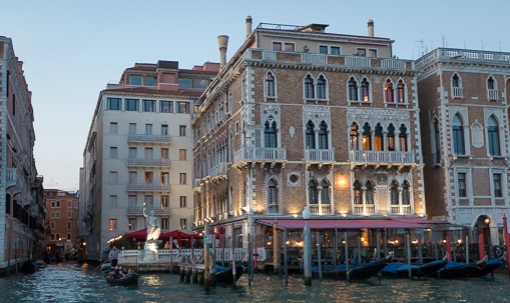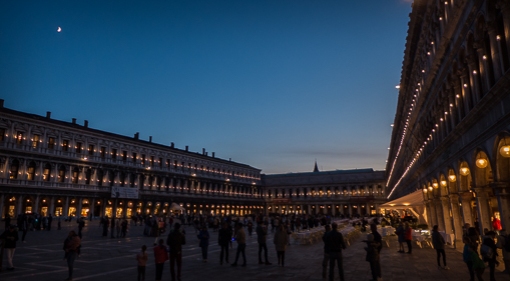The outdoor installation by Liu Ruowang (刘若望, 1977) is known as 狼来了 (The Wolves Are Coming), created in 2008 and shown previously in Beijing’s 798 art space, New Zealand, and now in Venice. Click here, here and here to see more about the Venice Biennale.

The wolves are installed in the Telecom Italy Future Center located outside the Giardini and Arsenale main venues. It is a great location – in a thoroughfare between Piazza San Marco and the Rialto Bridge – lots of tourists. Unlike the Biennale, there was no entrance fee.

In the courtyard, there must be at least 50 or more life-sized wolves, each assuming a different posture of aggression and beastial brutality.

The center of the wolves’s menacing attention is the Pieta by Michelangelo (a copy) placed in the middle.

The confine of the courtyard adds claustrophobia which is compounded by the number of animals in the hellish pack. While it is a static piece, the placement of the wolves between the columns near the entrance conveys a sense of an ongoing attack.

The wolves can be read as symbols of those who surround and attack the arts, history, religion, culture, etc.

Many of the wolves have blood in its jaw suggesting some targets are hurt but the Pieta is pristine white, untouched.

The exhibition is a part of the Friendship Project – between China and the Republic of San Marino. The artist lives in Beijing. On his web site, he noted that his name Ruowang is a phonetic translation of “Johann” and the village where he grew up in Western China was one of the first places that encountered Christianity.

In fact, the wolves can be installed to attack anything that is put in the midst of the snarling and bloody jaws. It is quite a clever piece of work that adapts itself to the surrounding. To some purists, this flexibility may be considered to devalue the merit of the art.

To say the least, it is quite sensational when one comes upon the installation, and it must have been a crowd-pleaser.
This post concludes our series on the Venice Biennale.
























 The meaning of the cannon (above), the copper dome, 2 pianos, money and mounted photos (below) need more explanation which unfortunately we did not have the time to discover.
The meaning of the cannon (above), the copper dome, 2 pianos, money and mounted photos (below) need more explanation which unfortunately we did not have the time to discover. .
.





















 .
.











 .
.
 .
.





























 .
.













































































